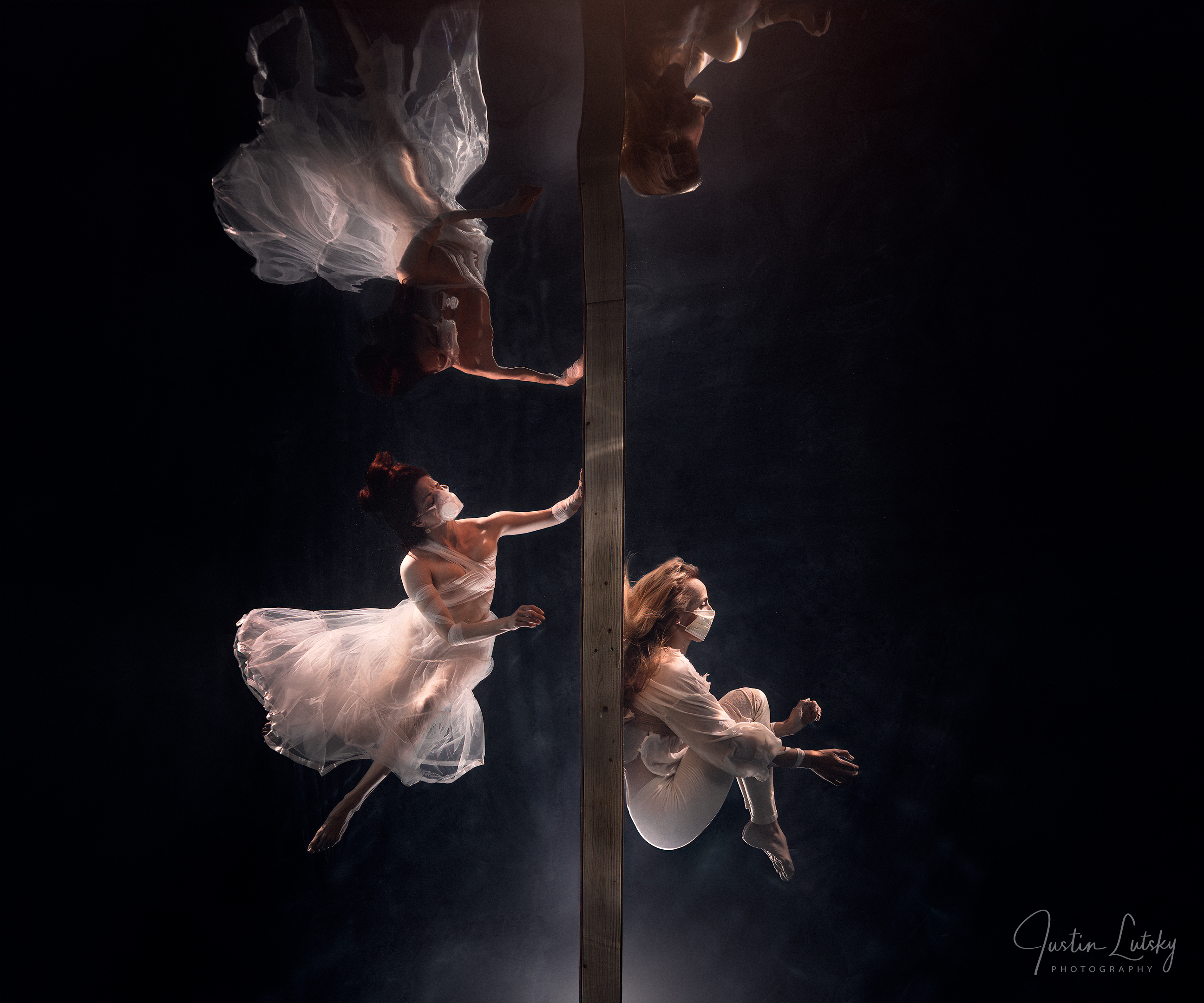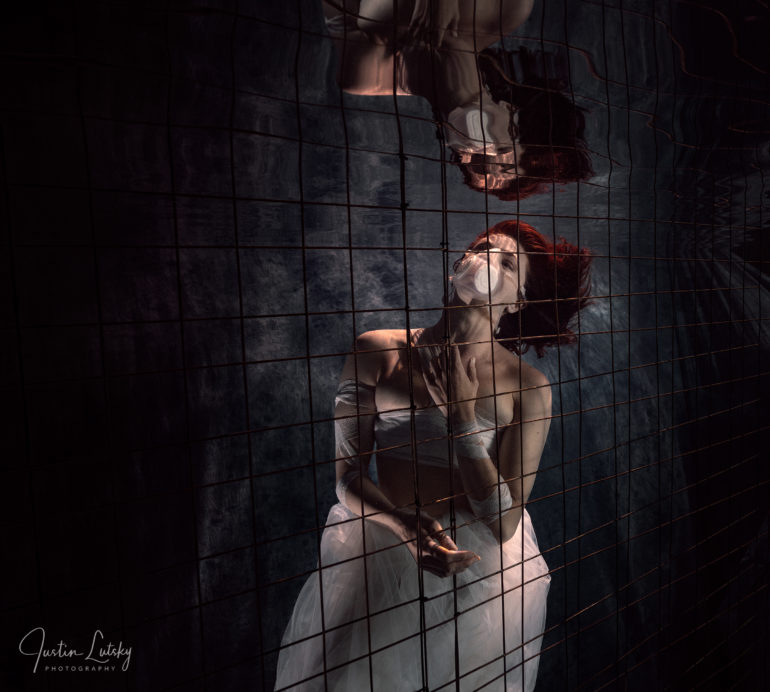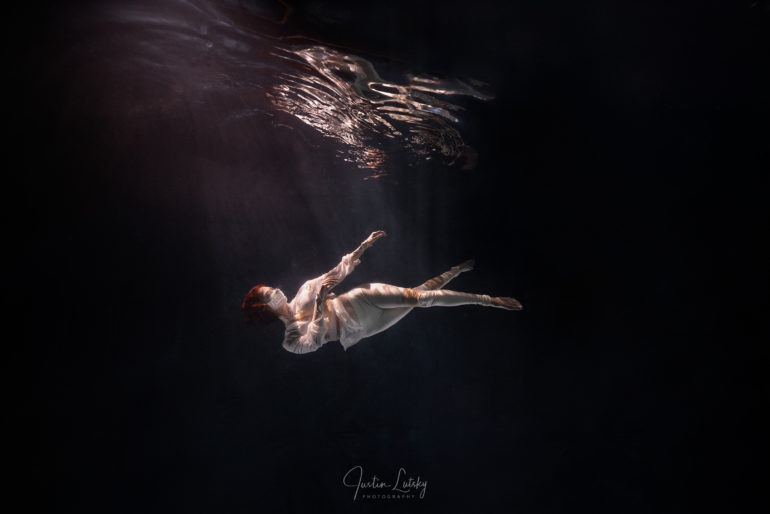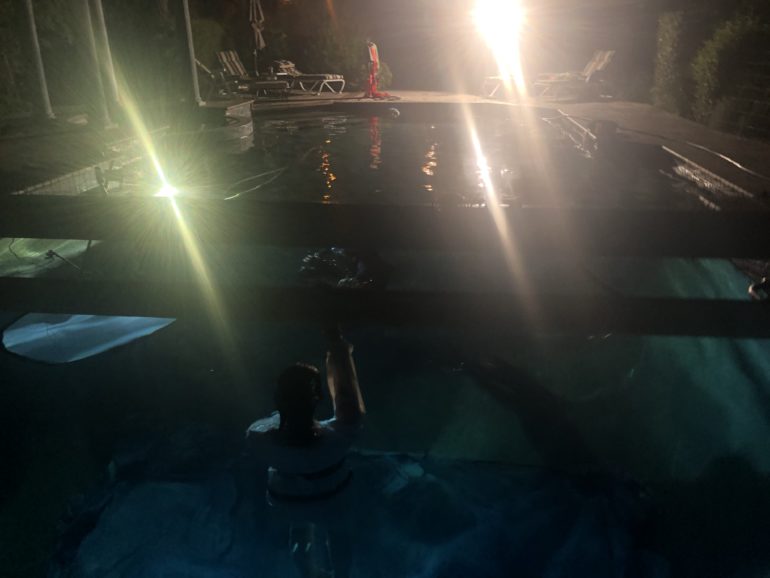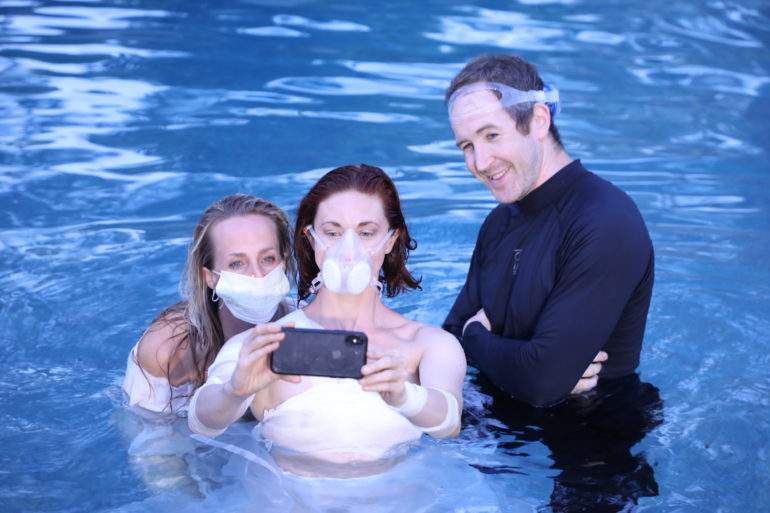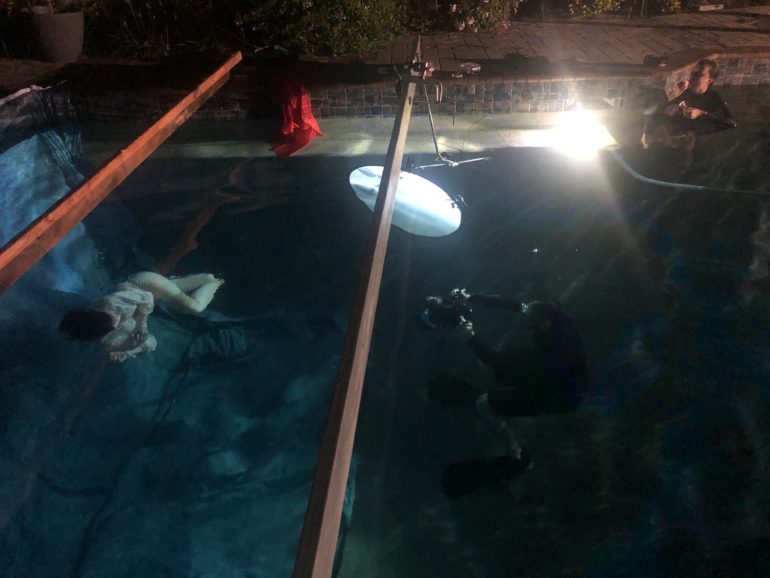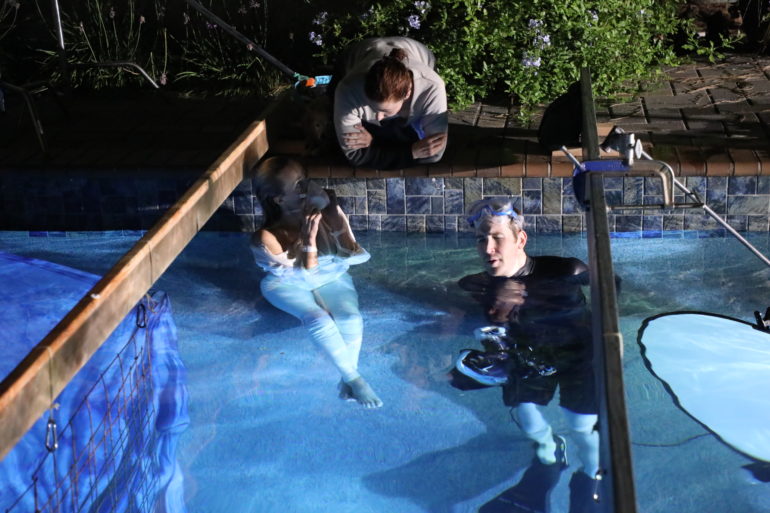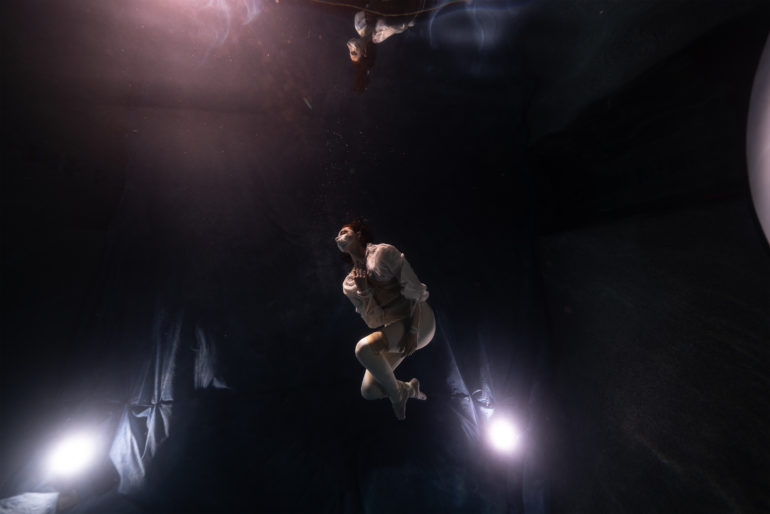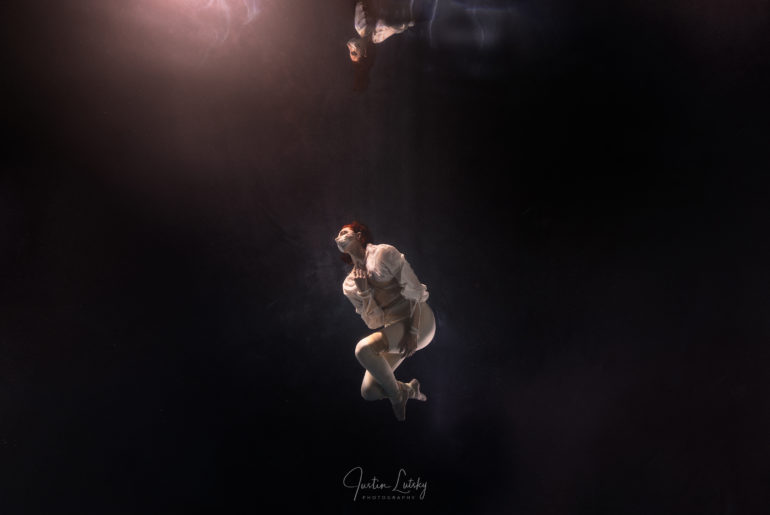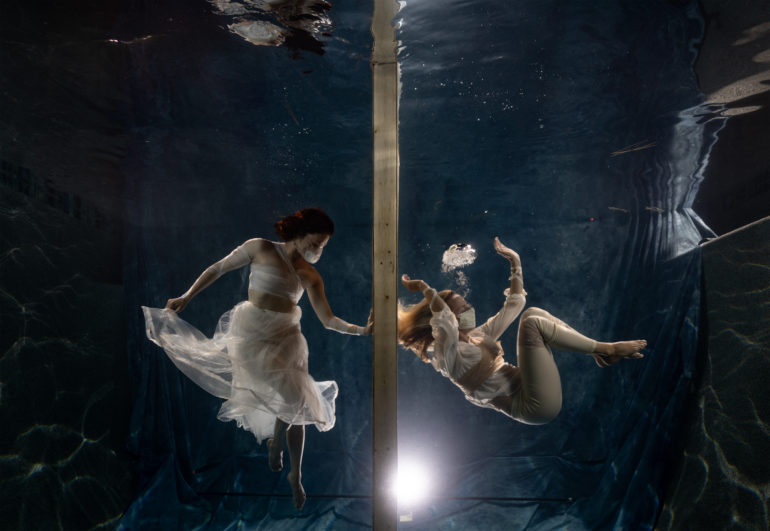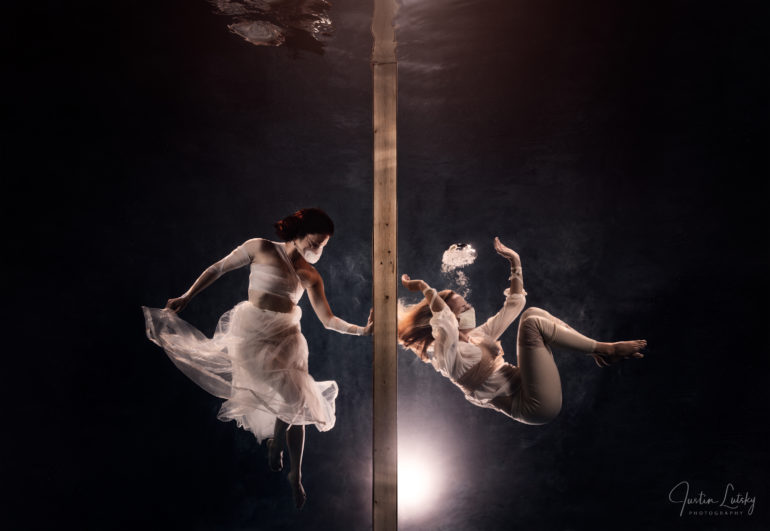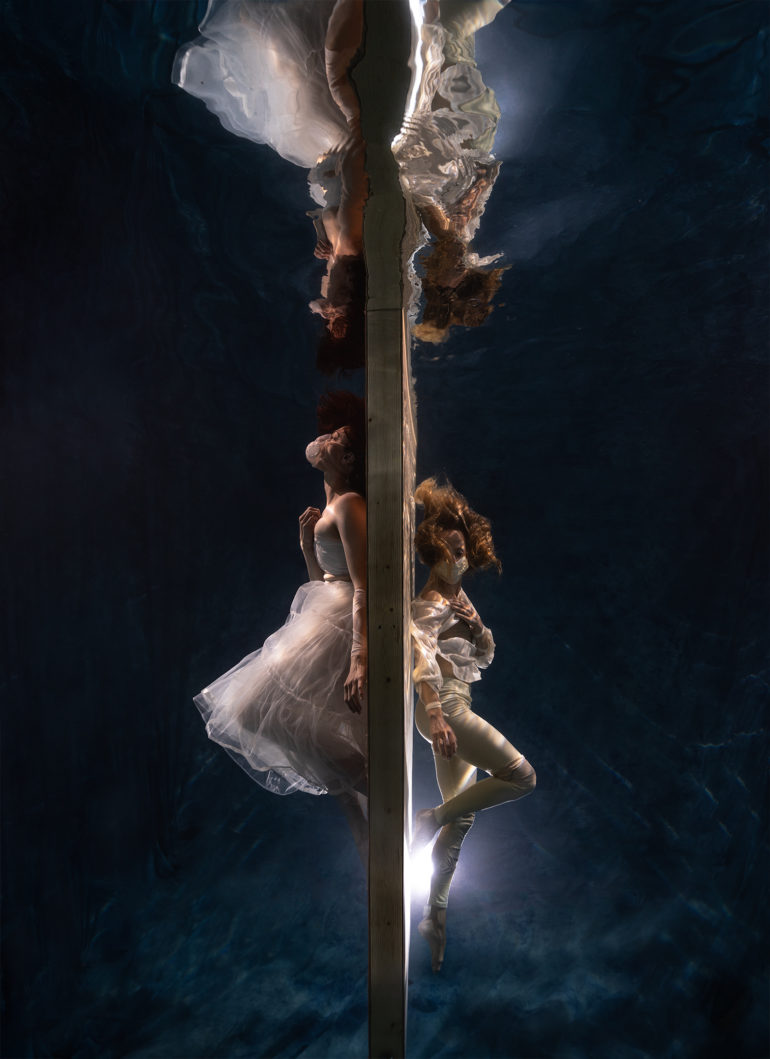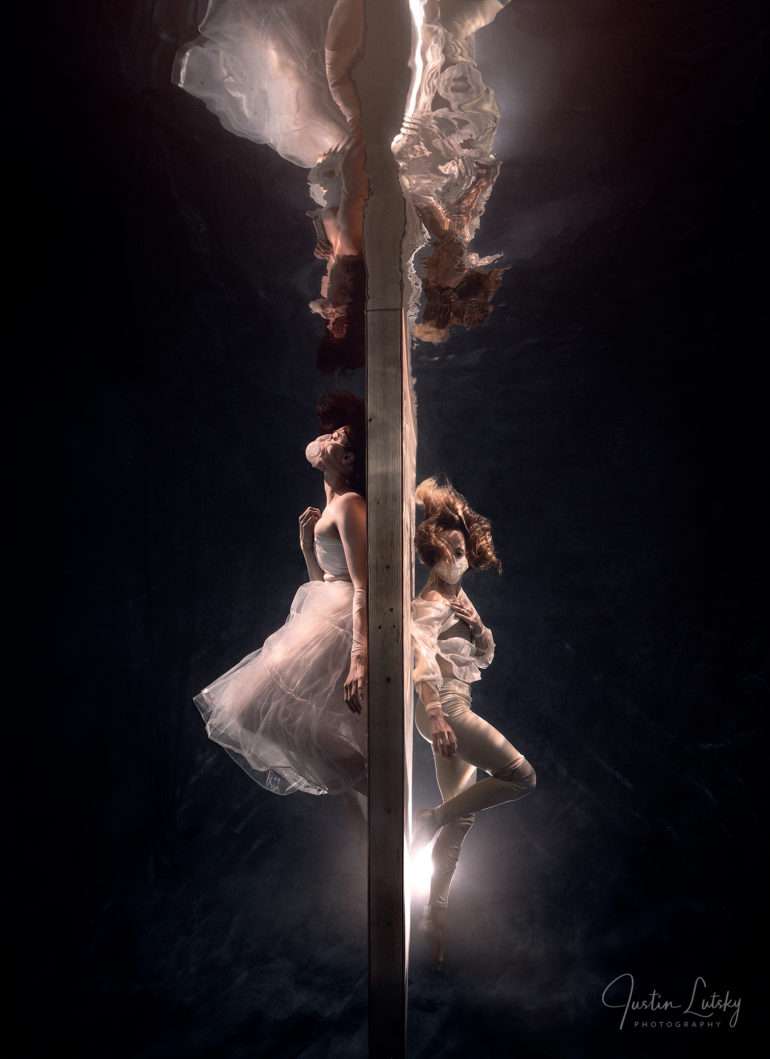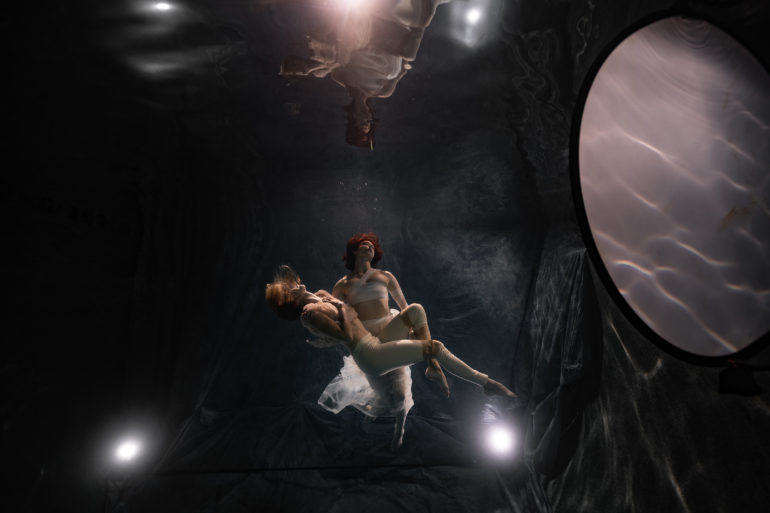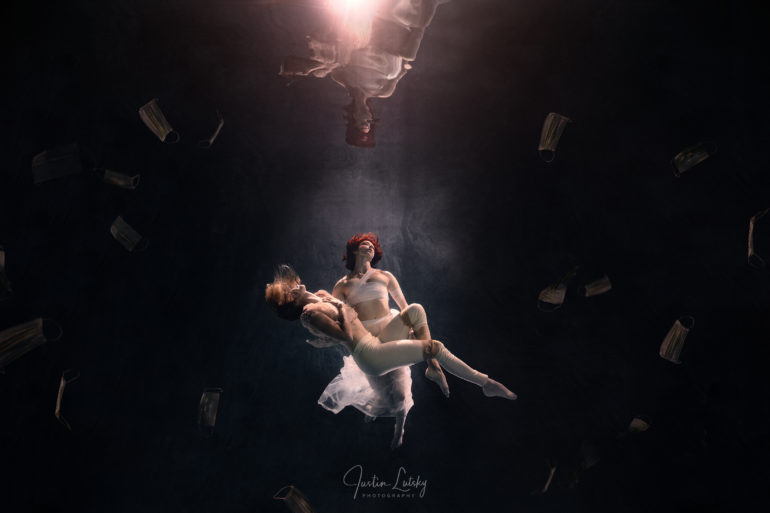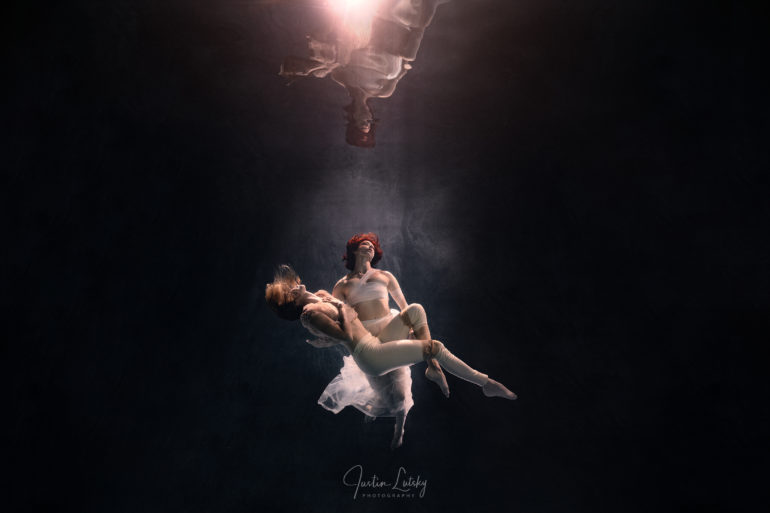Creating the Photograph is an original series where photographers share how they created an image with lighting and minimal use of post-production. The series has a heavy emphasis on teaching how to light. Want to be featured? Here’s how to submit.
“I’ve never before included so much practice and rehearsal time for a series’ images,” Christine Ren tells us. We’ve featured her work many times on this site, and it’s always dazzling. “Justin and I spent at least 2-3 sessions of practice shooting at different times of day and with different lighting setups before we layered in sets, props and I brought Sammy in for her and me to rehearse together. All of that incremental prep I think also really shows in the final shots.” The collaboration between Sammy, Christine, and Justin is a result of quarantine. When you’re stuck inside, you tend to become creative. And arguably, we’re in a golden age of creativity right now. At least Christine’s series, Sani/Nation, is big evidence of that.
The Concept for Sani/Nation
Christine Ren: When the COVID pandemic hit, I quarantined solo for 3 months and received a lot of advice on how to manage the experience but most of it bypassed my feelings, which made me feel even more alone. As I struggled for a better way to process, I started sketching underwater art concepts that conveyed some of the grief, loneliness, and longing I was experiencing, dreaming of the day again when I’d be able to return underwater and create with my friends and fellow artists.
Finally, as soon as it was safe, I devised an underwater performance campaign with an incredible team of quarantined creatives in Los Angeles, CA like photographer Justin Lutsky, who also helped build the underwater sets and movement artist Sammy Jane-Gray, as well as a talented support crew. We all came together to work and shoot late into the night and create photos with a powerful healing message. I personally believe art can serve as a powerful catalyst, a permissive force, to help individuals feel and integrate experiences and emotions that might otherwise cast out, overlook or supress. Art reaches you in places that your normal defenses against feeling just can’t compete with.
I wanted to create something to catalyze the full processing and integration of our painful emotions and experience associated with the COVID pandemic like isolation and disconnection and feeling lost, even trapped. To deny the feelings of loss and grief in our lives, and to deny validating them, risks turning pain into long-term suffering. If we avoid the pain signaling our distress – anxiety, depression, panic, sadness – it will fester within, lodge in our nervous systems and left unresolved may even be passed down as inherited trauma to the next generation.
My imagery series, ‘Sani/Nation,‘ is an evocative journey through my own personal experience with the COVID pandemic and my struggle to find a better way to process and manage what I recognize as shared communal grief.
The final series’ images truly turned out exactly as I had envisioned in my head and some, even better. That’s a very rare thing when working underwater because so much is out of your control. But in addition to the perfection of the dark moody lighting and aesthetic, the emotion was so spot on. The feelings we were attempting to convey were just so resonant and raw still for all of us involved that I think it elevated the message and final shots that much more – the pain of physical distancing as well as what we continue to hold onto and hope for: shared space, support, togetherness, connection and loving touch, was something all the artists understood and were completely on the same page about evoking in their own ways in each of their own pieces of the production.
Additionally, I’ve never before included so much practice and rehearsal time for a series’ images. Justin and I spent at least 2-3 sessions of practice shooting at different times of day and with different lighting setups before we layered in sets, props and I brought Sammy in for her and I to rehearse together. All of that incremental prep I think also really shows in the final shots.
The Gear Used for Sani/Nation
Justin Lutsky’s gear used for the Sani/Nation project.
- Sony A7R iii camera
- Sony 12-24mm f2.8 G Master lens
- Nauticam underwater housing
- Zen 230mm Dome Port
- Sea&Sea YS-D2J underwater strobes
- Godox AD200 above water strobes
The Sony A7Riii has always been my go-to camera. Using a nauticam housing makes it possible to shoot with it underwater, and still have access to every control and feature. It also makes it possible to trigger off-camera strobes, which was essential to creating images like these. For underwater concept and portrait work, I’m using lighting both underwater and above, and rely on several different triggering methods to fire all those strobes at once. Underwater the strobes are triggered optically. But above water, a copper cable is used to connect the camera to a waterproof radio transmitter that floats on the surface, which in turn triggers the studio strobes wirelessly.
The Sani/Nation Shoot
Christin Ren: Bringing these images to life had the most moving pieces to manage I have ever had to contend with. We were building sets, creating costumes, figuring out how to work with multiple bodies underwater at once along with new props that carried inherent safety risks. We were coordinating 3 days/nights of shooting in addition to pool rehearsals with a group of about 6-10 people. It was just a whirlwind – truly. The best approach was giving everything a longer runway in pre-production and take it, as much as possible, one piece at a time vs. try to tackle everything at once. Continual discussions related to theme, purpose, and concept between me and each of the artists involved were paramount to keep it all on track.
The hardest part on the shoot days, from my perspective, was working out a system for the underwater models to coordinate with each other and also with the photog. To get the shot, when the models were posing together, required a lot more time and slowing down 10-fold to ensure safety. Practice was key to staying relaxed and nailing poses and buoyancy with two bodies connected.
Additionally, Sammy and I developed a system of underwater sounds, or noises, to signal to each other when we were in or out of position and also when we needed to come up for air. This became really important if we were entangled together in a pose and someone needed to get out quickly without hurting the other. And when we were disconnected, on either side of the wall partition, it was key to bring the shot together because we couldn’t see each other at all.
Lastly, there was a good deal of difficulty at first getting used to and finding safe ways to work with the masks underwater. The plastic mask had these creeping feeling of slowly filling with water the longer you were under and the cloth mask was prone to getting stuck on the face so when you surfaced to breathe, you were apt to suffocation. It took a good safety crew and practice, but we found ways to work with the props; mostly ensuring that we were shaving a good deal of air time off our normal bottom times as models to give ourselves a buffer to deal with any hiccups.
Also, keeping lighting consistent throughout all the images in the series and on both the subjects was tough. I also had the truly hardest task of my life to narrow our over 800 shots down to a final thematically resonant 15 or so final selects that best told the story.
Justin Lutsky: Certain images in the concept involved building and hanging a vertical wall underwater which presented some interesting challenges. Wood floats in water, so we had to devise a way to secure one end of the structure above the pool while weighing down the other side. We started by spanning the top of the pool with several large pieces of lumber. These provided a secure framework to rig the wall, as well as other lights from. We floated the wall out on the surface, secured one end of the wall to the support beams, then added lead weight to the bottom of the wall until it hung vertically in the water. We also dropped in a large 20x20ft backdrop behind everything to add subtle texture to the final images.
Other images in the concept involved the visual element of a ‘sea of masks’. Initially, the thought was to shoot that practically and hang numerous masks underwater. We ultimately decided to make the masks a composited element. To accomplish this, once the main photography was finished, we kept the lighting setup the same and shot a series of images of individual masks floating in the water.
Post-Production for Sani/Nation
Justin Lutsky: Post-production starts with basic overall adjustments in lightroom, then quickly into Photoshop where the bulk of the work happens. I generally tend to work in several passes, Cleanup work which involves extending the background if necessary, removing bubbles, backscatter, and other particles floating in the water. Frequency separation to smooth out skin imperfections and shadow transitions. Dodging and burning to bring attention to the most important elements in the frame. Then finally color toning to create the final mood and overall feel of the image.
Some of these images involved some extra post-production work to extend the practical wall down to the bottom edge of the frame as well. Then for a few shots, selecting and compositing the ‘sea of mask’ elements was done at the very end of the process. Only once the final images stood on their own as complete works did we blend in the extra layer of composted elements.
Before and After Photos for Sani/Nation
Full credits on the Sani/Nation campaign listed below:
Concept Art Director & Performer: Christine Ren
Photographer & Sets: Justin Lutsky
Dance & Underwater Model: Sammy-Jane Gray
Production Assistant & Safety: Sarah Tan
Production Assistant & Safety: Kirk Porter
BTS Videographer 1: Heather Lutsky
BTS Videographer 2: Ryan Stuart
Support Crew: Daein Kang & Emily Tan
Video Edit: Abbey Botwell
All images used with permission from Justin Lutsky and Christine Ren.


